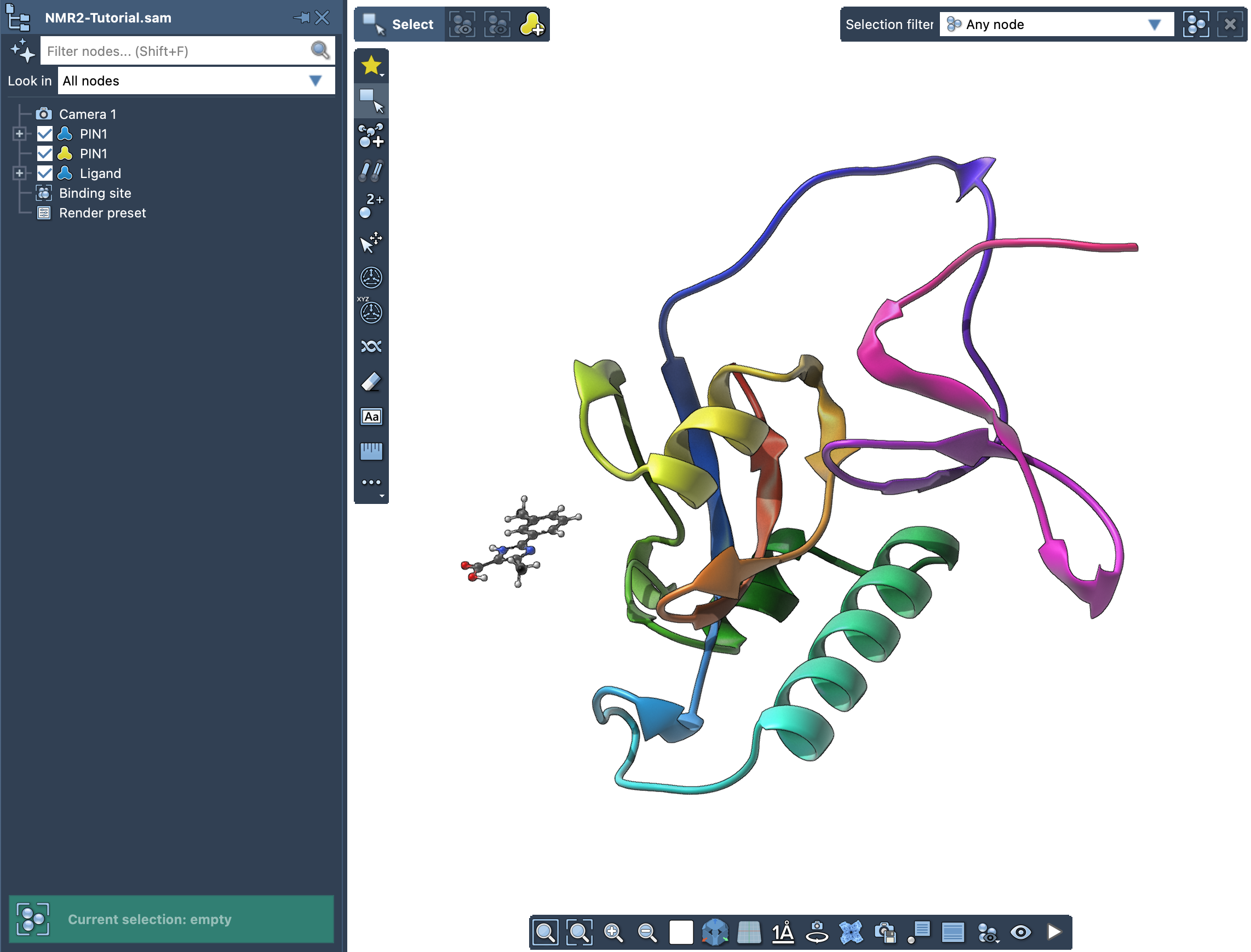Have you ever wanted to try out a new analysis workflow but hesitated because setting everything up from scratch seemed daunting? If you’re exploring how to predict protein-ligand complexes using NMR data, there’s a helpful shortcut in SAMSON worth knowing: the NMR2 Tutorial Document import feature.
Instead of manually constructing the protein-ligand system, defining key residues, and aligning structures, you can load a fully initialized tutorial document into SAMSON that contains all of the necessary components to get started with NMR2.
What’s Included in the Tutorial Document?
Once imported, you’ll find a ready-to-use molecular system that includes:
- PIN1: a protein structure
- Ligand: the small molecule
- Binding site: a group consisting of 4 key residues (
LEU 61,LEU 122,MET 130, andLEU 141) involved in interaction
This template is ideal if you’re unfamiliar with the system or simply want to test the capabilities of the NMR2 extension before working on your own data.
How to Import It
The import process is straightforward:
- Open SAMSON and go to Home > Download
- Paste the following identifier into the field: https://www.samson-connect.net/documents/3433d68c-50f9-4f45-848d-42e8142572ce
- Press Enter
This will automatically import the document into your SAMSON workspace.

Why It’s Useful
Importing a full setup saves time and reduces the chance of user error in system preparation. You won’t have to manually locate structures, define residue groups, or guess which atoms are important. It’s also a practical way to move from theory to practice in just a few clicks.
Bonus: The included structures are compatible with the NMR2 interface, so once the tutorial document is loaded, you can immediately proceed to setting up your distance restraints and running predictions.

Start Exploring
Whether you’re a beginner looking to understand how NMR-based docking works, or an experienced modeler evaluating NMR2’s predictions, the tutorial document lets you focus on the computation—not the configuration.
Learn more details and explore additional features on the original tutorial page: Predicting protein-ligand complexes using NMR2.
SAMSON and all SAMSON Extensions are free for non-commercial use. You can download SAMSON here.





